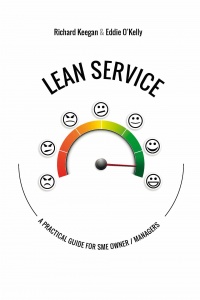Introducing Lean Service19 August 2016 | Admin
The creation of value starts with a resource and ends with what a client or customer perceives as value. In a service business, the primary resource is people. Most services are delivered by people, so a Lean Service business needs to understand its people, how they add value and how this value-adding process can be optimised. In a service business, the delivery of value is very much customer- or client-dependent. The client defines what they see as ‘value’, not the business. The most successful service businesses understand this very well and spend much time and effort working to better understand their customers and to meet their spoken needs and often unspoken wants. In a restaurant, not every client wants lots of attention from the staff, not everyone wants the same level of service, and not everyone is pleased by the same things. It is important that a service business understands the core of its delivered value and the spectrum of its clients if it is to deliver its true value. Retaining value is absolutely essential to a service business. It is the retention of value that gives the business the potential to make a profit. The market defines the level that customers are willing to pay for any given service or product. How a business organises its resources of people, systems, processes and premises determines just how much of the value stays with the business. If you are to identify, develop and retain value, you need to look closely at how your people are trained. How well are your customers’ needs and wants understood? How closely are your internal processes aligned to most efficiently meet customers’ requirements? To understand how Lean concepts can be applied to a service business, you need to know a little about Lean Principles, Lean Rules, Lean Questions and Lean Tools. Read on … SEEING PROCESSES – LOOK, SEE, UNDERSTAND, THINK, DO Many managers of service businesses think it is easier to deliver Lean in a manufacturing environment because ‘you only have to deal with machines’. This is a commonly-held belief but it is not correct. Lean implementation in a manufacturing environment is centred on the people and how they interact with the processes and machines. Two different businesses can have exactly the same machines, serve the same business sectors and have completely different business results. The difference is in how the central resource – people – are led, managed, encouraged, directed and supported. The key difference between a manufacturing and a service business is that it is often easier to ‘see’ the physical flow of material through a manufacturing process. How can we see the flow through a service business? How can we see where things are getting jammed up, where there is excess capacity for work or where there is overload? Process Mapping and Physical Flow Mapping are the core Lean tools to help us to see the service process. We need to be able to see the process before we can ‘understand’ it or before we can ‘do’ something to improve it – but, first, we need to ‘look’ to start the improvement process. Service companies typically ‘do’ something for their clients. Managers in a service environment are increasingly coming to understand that their departments are, in effect, production units. People come in for a service and leave serviced. Data comes in, gets processed and the output leaves the department. This ‘doing’ is often based on knowledge, administration or an IT approach. The trick for a Lean Service implementation is to find a way to see these processes: to show a physical ‘picture’ of the processes to let people look for and identify the value-adding, the necessary and the wasteful elements of the work. Extracted from LEAN SERVICE: A PRACTICAL GUIDE FOR SME OWNER / MANAGERS by Richard Keegan and Eddie O'Kelly.
|
|

